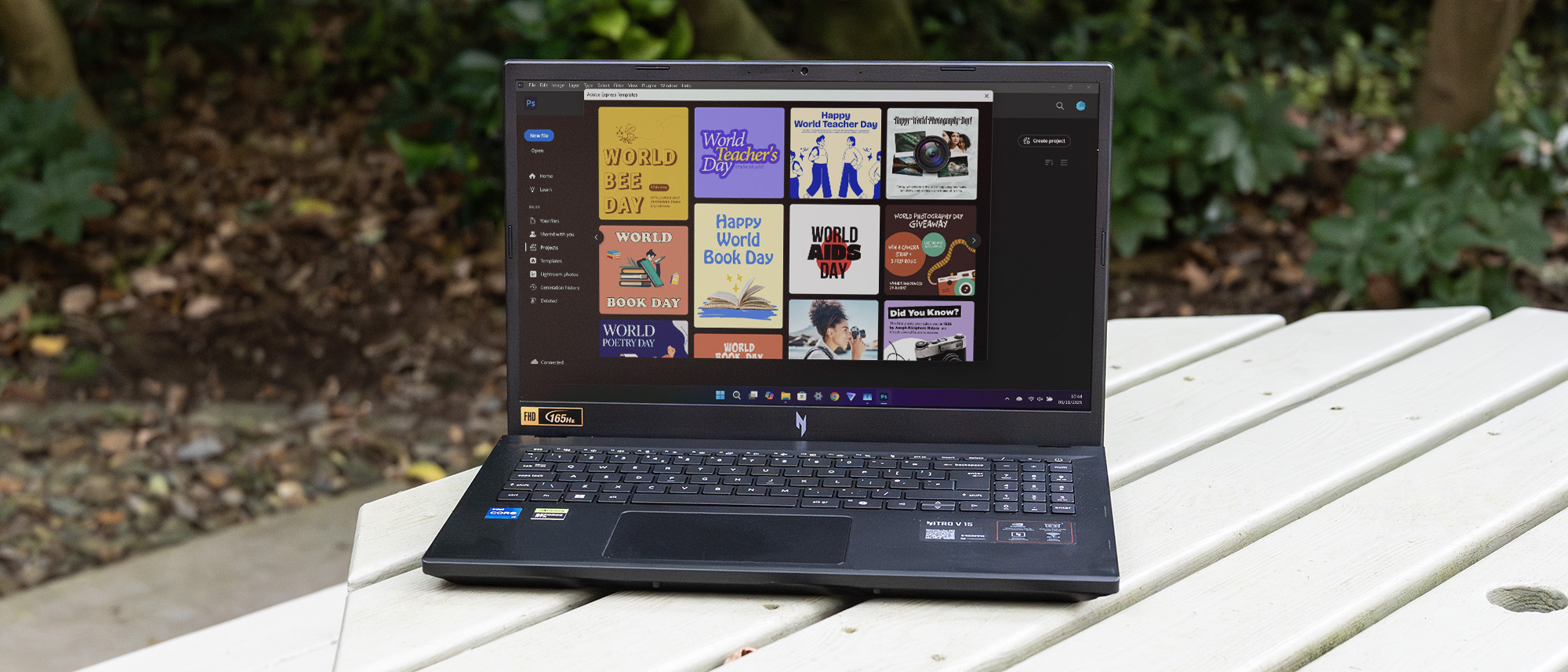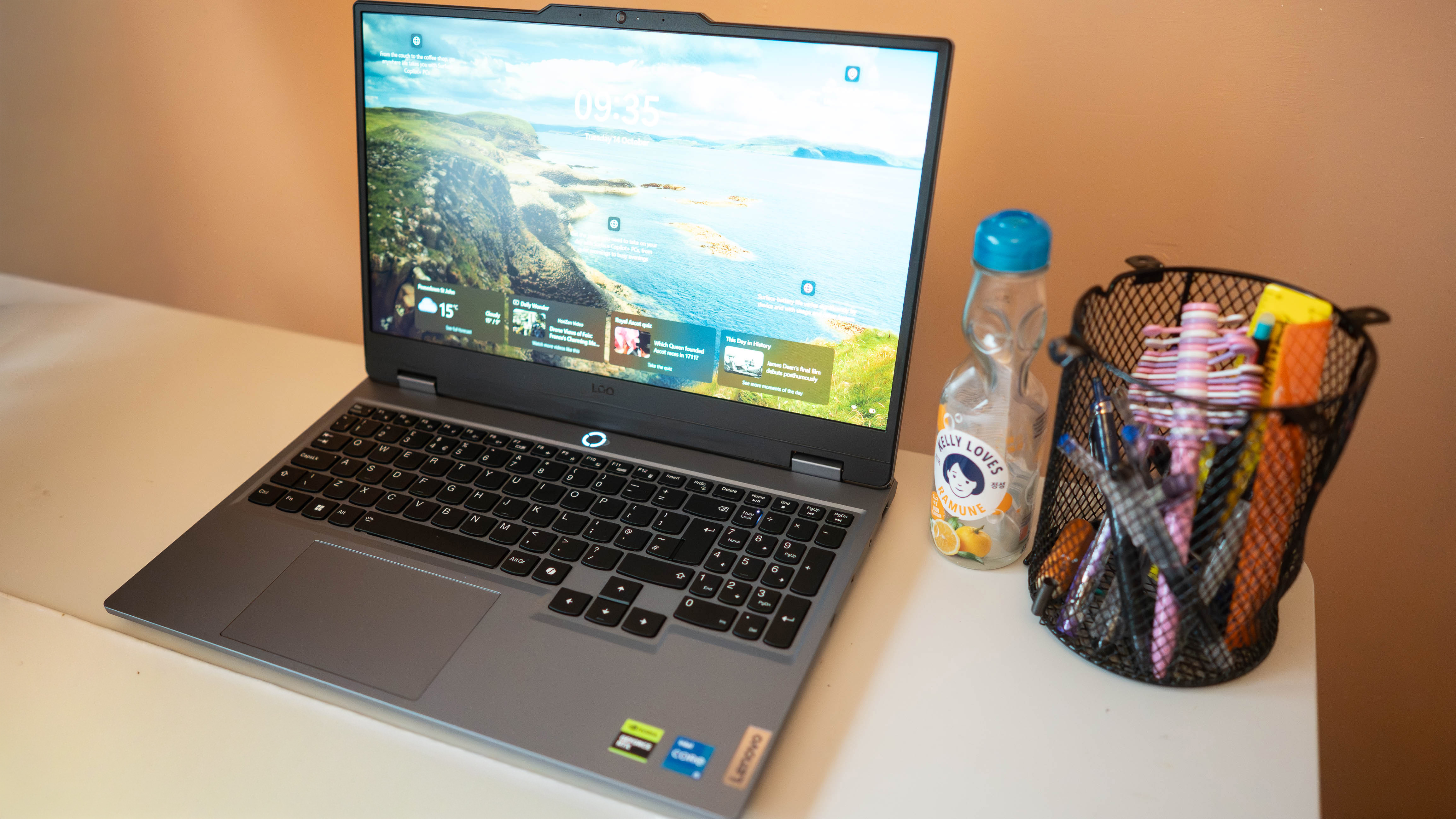Our Verdict
Low-cost (though still about a grand) gaming laptops can make effective creative machines, with their strong CPU and GPU performance. This one from Acer proves that, with enough power for video editing, a bit of rendering, and flying through 2D graphics. It’s a bit big and loud and heavy, but that’s the price you pay for not spending more.
For
- Decent performance
- Nice price
- USB4
Against
- Older CPU
- Big and heavy
- Hot and loud
Why you can trust Creative Bloq
A gaming laptop that you can pick up for the same sort of price as a MacBook Air, yet totes a powerful last-gen CPU and a low-end Nvidia graphics card that will still destroy integrated graphics in video and rendering tasks, the Acer Nitro V15 is an interesting proposition for graphic designers. It’s not subtle, and is clearly meant to support the shooting of aliens rather than the creation of design masterpieces, but there's no denying this combo works when it comes to shifting pixels.
Key specifications
CPU: | Intel Core i7-13620H (10 core) |
NPU: | None |
Graphics: | Nvidia GeForce RTX 5060 (8GB) |
Memory: | 16GB DDR4 |
Storage: | 1TB SSD |
Screen size: | 15.6in |
Screen type: | IPS |
Resolution: | 1920 x 1080 |
Refresh rate: | 165Hz |
Colour gamut (measured): | 50% P3 |
Brightness (measured): | 300 nits |
Ports: | 1 x USB4, 3 x USB 3.2 Gen1 Type-A, 1x HDMI, 1x Ethernet, 1x 3.5mm audio |
Wireless connectivity: | Wi-Fi 6E, Bluetooth 5.3 |
Dimensions: | 362.9 x 23.5 x 239.9 mm |
Weight: | 2.11kg |
Design, build and display
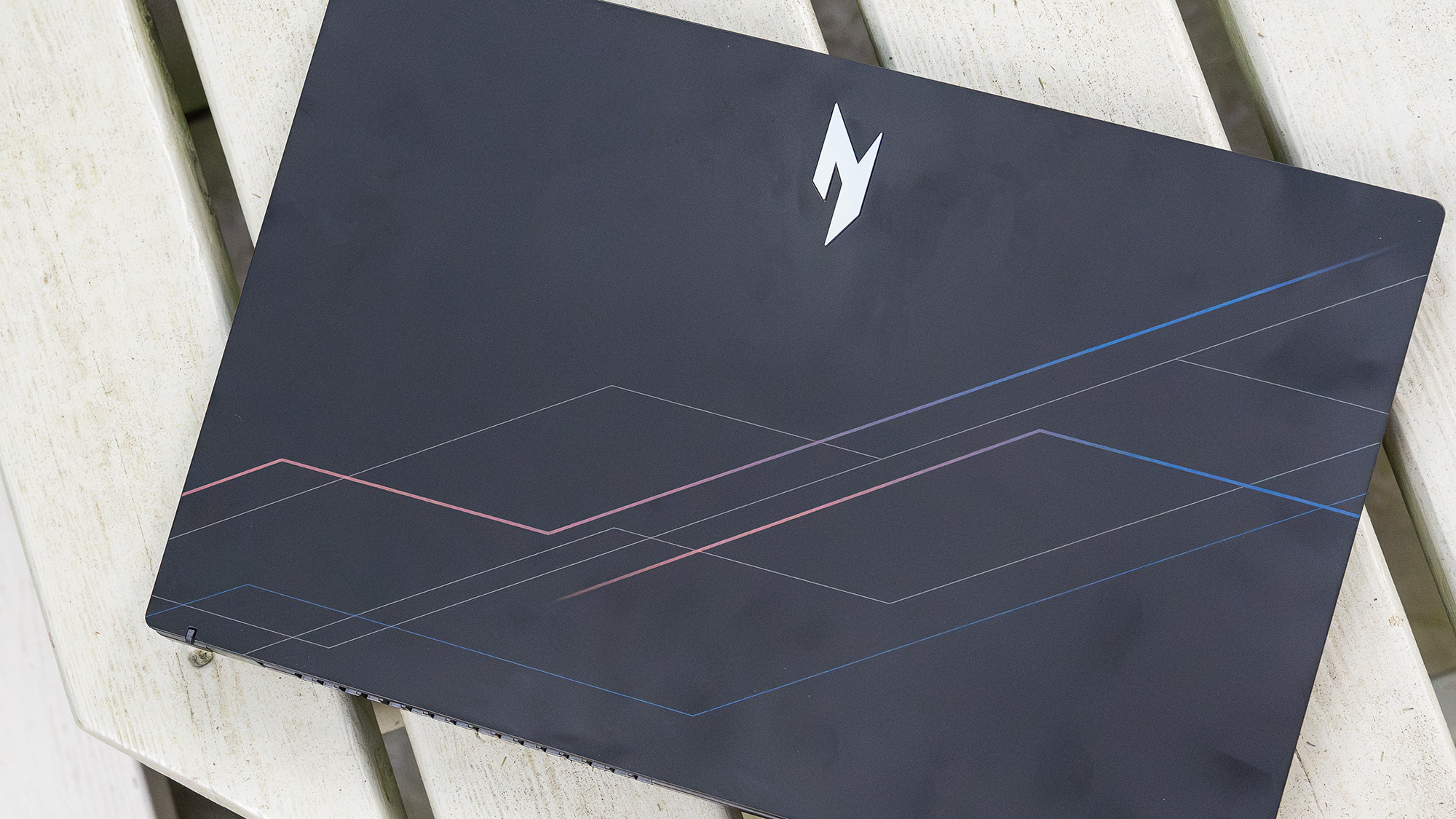
• A bit chunky
• Poor colour accuracy
The Nitro feels big for a 15-inch laptop, though that may be due to the sheer number of 14-inch and smaller machines with 16:10 screens that have landed in the Creative Bloq Testing Lab and Cat Cafe recently, skewing the perception of size. At just over 2kg, it’s a bit of a brick too, but at this price point, we’re happy to see some design niceties filed away in the pursuit of form following function.
And while it’s not festooned with RGB lighting, as a gaming laptop, you’d expect some sort of flourish, and it comes in the form of a pattern of lines across the lid. It’s actually rather nice to look at, though you won’t be doing much of that as it’s on the opposite side of the screen, and is joined by a Nitro logo that looks like something the Wu-Tang Clan passed over during a presentation from their branding agency.
The display is an impressive one. It may only be a 1080p IPS, but when it’s done well, this screen tech can produce some impressive performance. There's a 165Hz refresh rate for your gaming (and high frame-rate video) needs, and a full-size HDMI socket on the side for an external monitor. You'll want one too: the built-in display can output just 66% of sRGB, 50% of Adobe RGB, and 50% of DCI-P3. Maximum brightness is 300 nits.
There are rather a lot of cooling vents on the Nitro V15, and the design plays into this by placing copper-coloured fins behind the grilles so they can be seen. Turn it over and you can make out the shapes of the fans through the bottom of the laptop, where some rubber feet help raise it off a flat surface so they can dump heat more effectively.
Design score: 2/5
Daily design news, reviews, how-tos and more, as picked by the editors.
Features
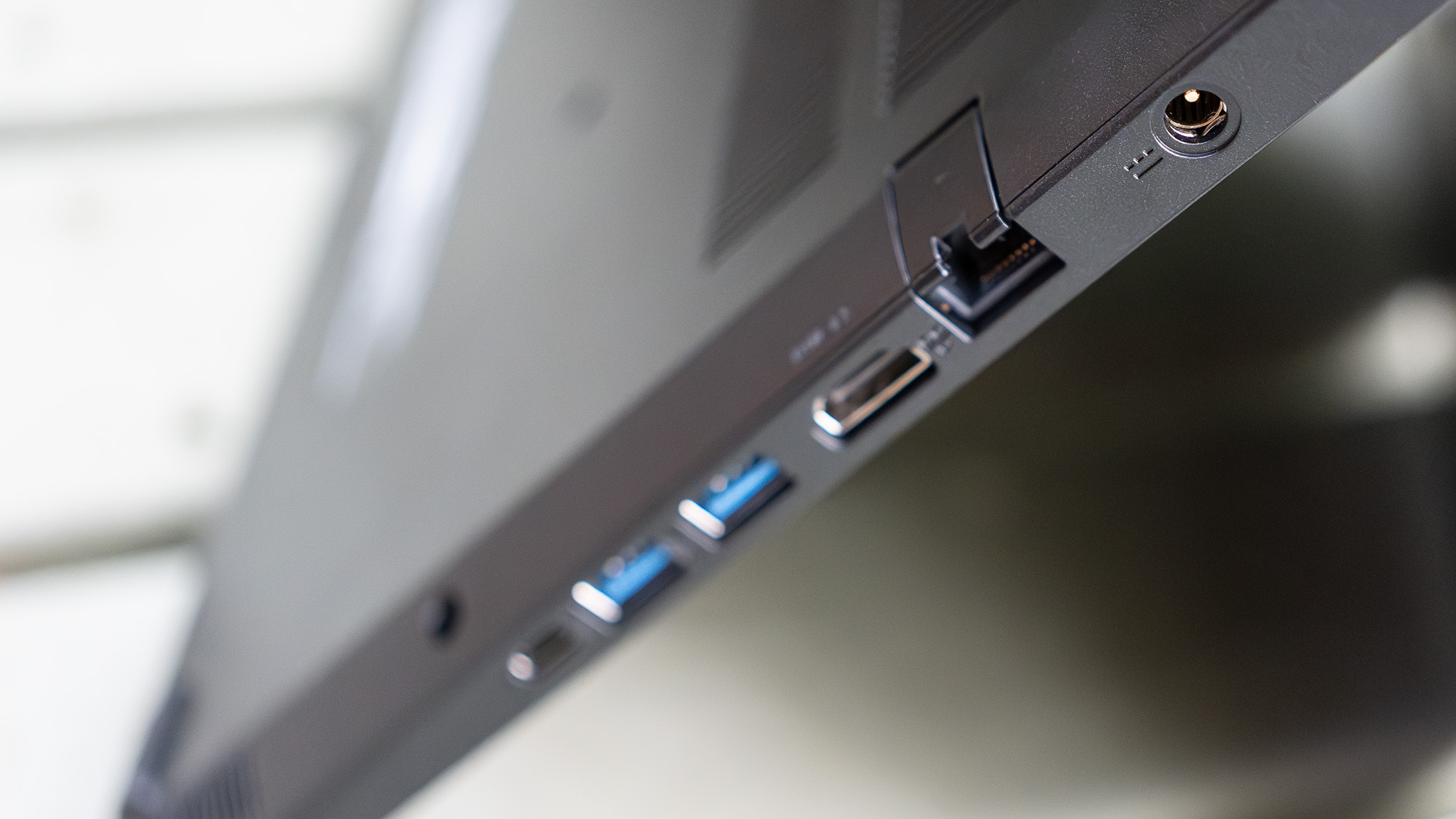
• Lots of USB
• Fat charging cable
The Nitro V15 comes with three USB Type-A ports and an Ethernet - one of those spring-loaded ones that you’ll have to nudge open when you want to insert the cable. This is pretty good, and they’re joined by a single Type-C USB4 port that can connect to really fast storage. With a 1TB SSD inside, there's a decent chunk of storage available, though look out for 512GB models, as this is starting to feel a bit constricted as app and project sizes continue to increase. Along with the full-size HDMI port and dedicated charging socket, it’s a really nice selection of ports to have, though one that takes a step further toward making the laptop feel a bit chunky, especially when you see the size of the charging cable’s tip. There's no charging over USB-C here.
On the front of the machine, you get a keyboard with an orangey backlight that’s not at all unpleasant (tying in with the copper colouration of the cooling fins), and is topped with keys that don’t have a huge amount of travel but still feel good under the fingers. A slimline numpad has been squeezed down the side, which could have been omitted to give the keys more room to breathe, but it comes in useful for tapping in your PIN as the webcam doesn’t support face recognition. Finally, there's the touchpad, which makes a positive clicky noise when you press down on it, and while it could be bigger given the overall size of the laptop, it doesn’t give much to complain about.
Feature score: 3/5
Benchmark scores
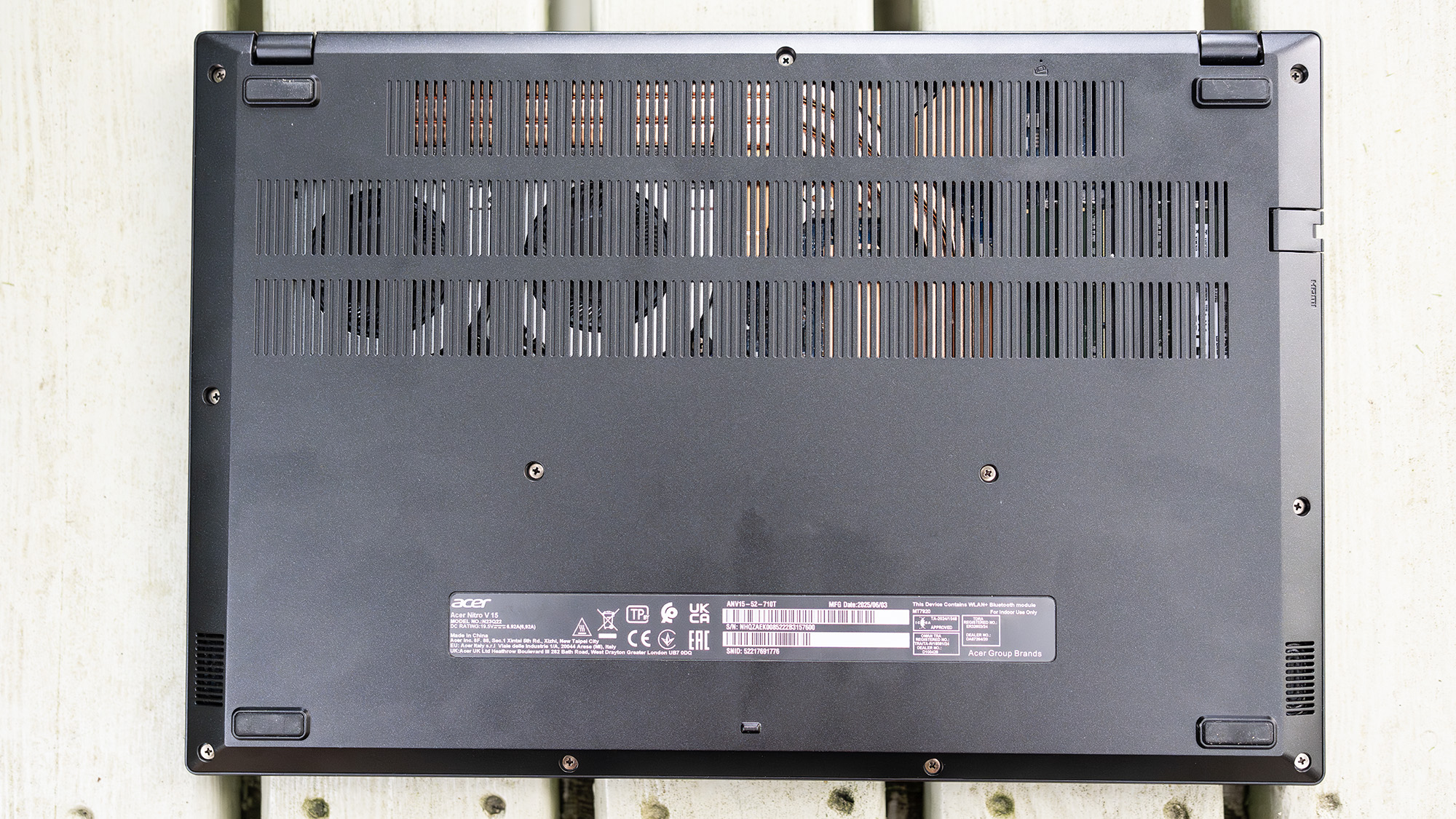
We test every one of our laptops using the same benchmarking software suite to give you a thorough overview of its suitability for creatives of all disciplines and levels. This includes:
• Geekbench: Tests the CPU for single-core and multi-core power, and the GPU for the system's potential for gaming, image processing, or video editing. Geekbench AI tests the CPU and GPU on a variety of AI-powered and AI-boosted tasks.
• Cinebench: Tests the CPU and GPU's ability to run Cinema 4D and Redshift.
• UL Procyon: Uses UL Solutions' Procyon software suite to test the system's ability for AI image generation in Stable Diffusion, its Microsoft Office performance and its battery life in a looping video test.
• Topaz Video AI: We use Topaz Video AI to test the system's ability to upscale video and convert video to slow-motion.
• PugetBench for Creators: We use the PugetBench for Creators benchmarking suite to test the system's ability to run several key tasks in Photoshop and Adobe Premiere Pro, as well as its performance when encoding/transcoding video.
• ON1 Resize AI: Tests the system's ability to resize 5 photos to 200% in a batch process. We take the total time taken to resize the images and divide by 5.
Performance
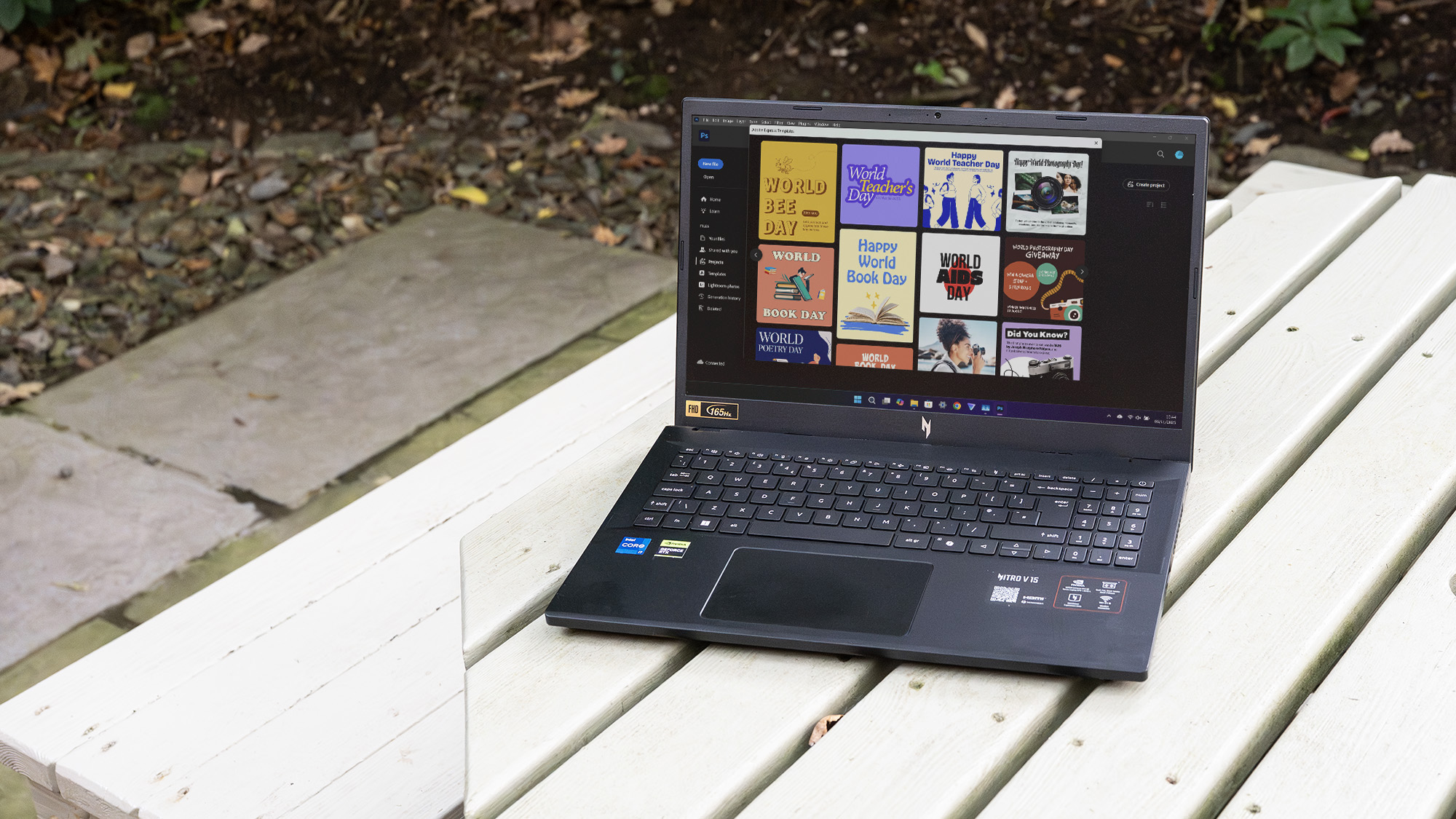
• Good for the price
• Battery life better than expected
The Core i7 at the heart of the Nitro V15 is a 10-core chip, split between four P cores and six E cores in the same way as the Apple M5. Unlike that chip, however, the i7-13620H won’t be wowing anyone with its benchmark results. That’s not to say it’s bad, but a mobile i7 from Intel’s Raptor Lake generation, launched in early 2023, isn’t hugely competitive at the top end of the processor market in 2025. The same goes for the DDR4 RAM, when we’ve had DDR5 in laptops for some time, and an internal SSD that runs fairly slowly for a PCIe 4.0 device (but is still pretty nippy as internal SSDs are crazy fast, and you won't notice unless doing large sequential data transfers).
It’s all perfectly competent, though, sitting in such esteemed company in the benchmark results as the Microsoft Surface Pro 12 and MSI Prestige 13 AI+ Evo in terms of single-core CPU performance (and it beats the MSI in multi-core tests too), then stomping all over them with its Nvidia GPU. In the Geekbench graphics test it scores slightly better than the 2024 ASUS ProArt P16, which received the coveted Creative Bloq Editor’s Choice award when it was reviewed earlier this year.
What this laptop is all about is performance per currency unit, and while you might miss the way more modern Core Ultra chips have a built-in NPU or lower power consumption to eke out the battery life (which sits at just over six hours hours in our looping video test), we’ve come to accept that a less than stellar battery endurance is just the price you pay for a laptop with any kind of graphics power, especially in this cost bracket, but the Nitro actually manages to beat other gaming laptops in this area.
It’s also got a lot of heat to shift. All those vents with their copper innards come into their own when you shift the laptop into Turbo mode using Acer’s software and let it rip. The fans are pretty loud, but clearly effective and necessary.
Performance score: 3.5/5
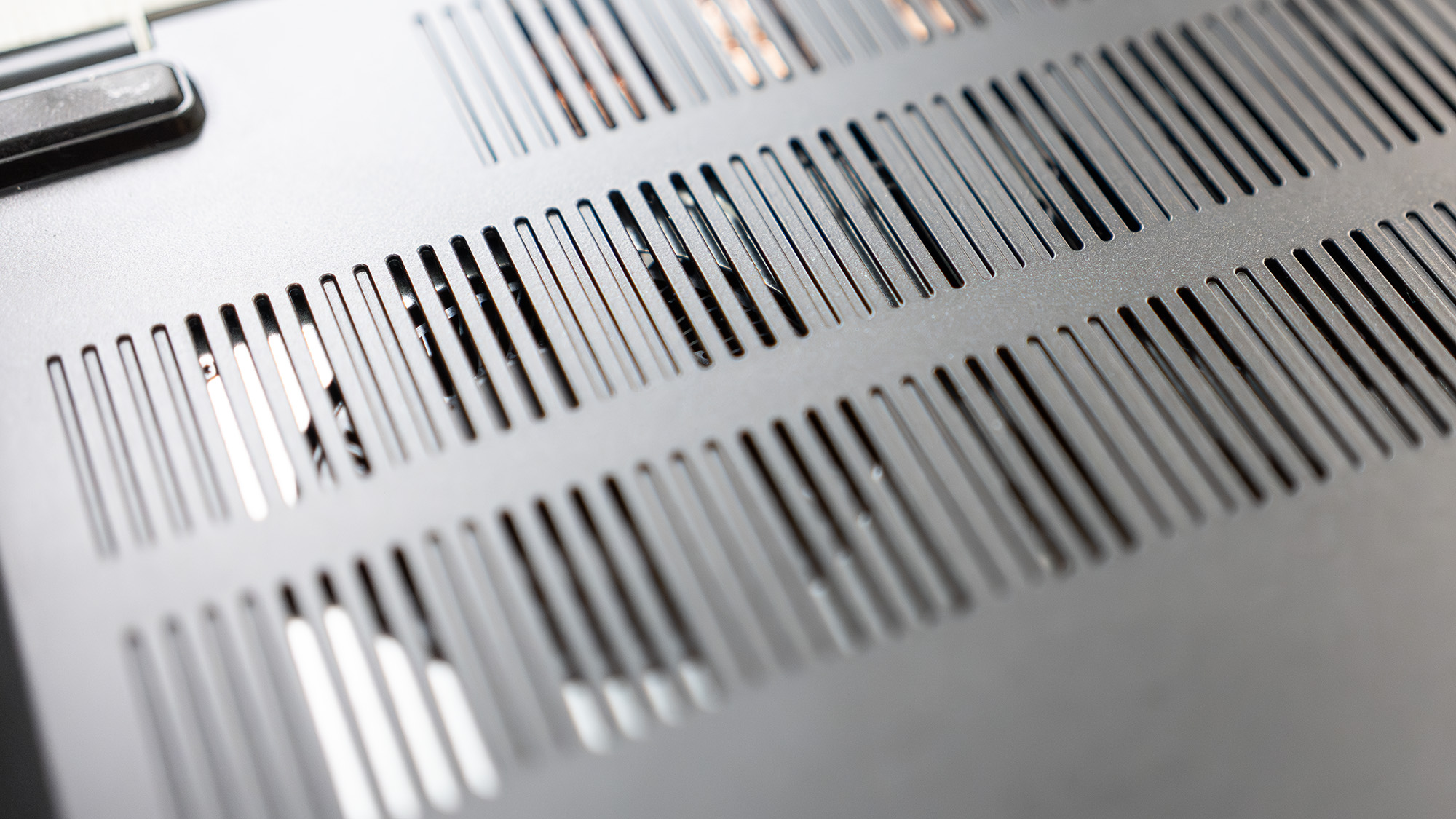
Price
For just a bit over the cost of a MacBook Air, or £1,049.99 at the time of writing, you get a laptop that bests it in graphics processing (and has a better OpenCL score than the new MacBook Pro too). There are plenty of things the more expensive laptops of this world do better than a cheap gaming laptop, but if you’re looking for something to edit video, render, play games, or just watch six hours of TV on, you don’t have to pay more.
Value score: 4/5
Who is it for?
• Students and freelancers
Anyone with an eye for a bargain should check out the Acer Nitro V15. It may have some low-end and even last-gen gaming tech, but its ability to move pixels around isn’t held back by this, and the cost will make it attractive to those trying to create without spending a fortune.
Attributes | Notes | Rating |
|---|---|---|
Design: | Heavy and lacking refinement | 2/5 |
Features: | Lots of useful USB ports | 3/5 |
Performance: | Good for the price | 3/5 |
Value: | A lot of performance for the money | 4/5 |
Buy it if...
- Good value appeals
- You don't need an NPU
- You have an external screen already
Don't buy it if...
- Ultraportable rules
- Colour accuracy matters
Also consider
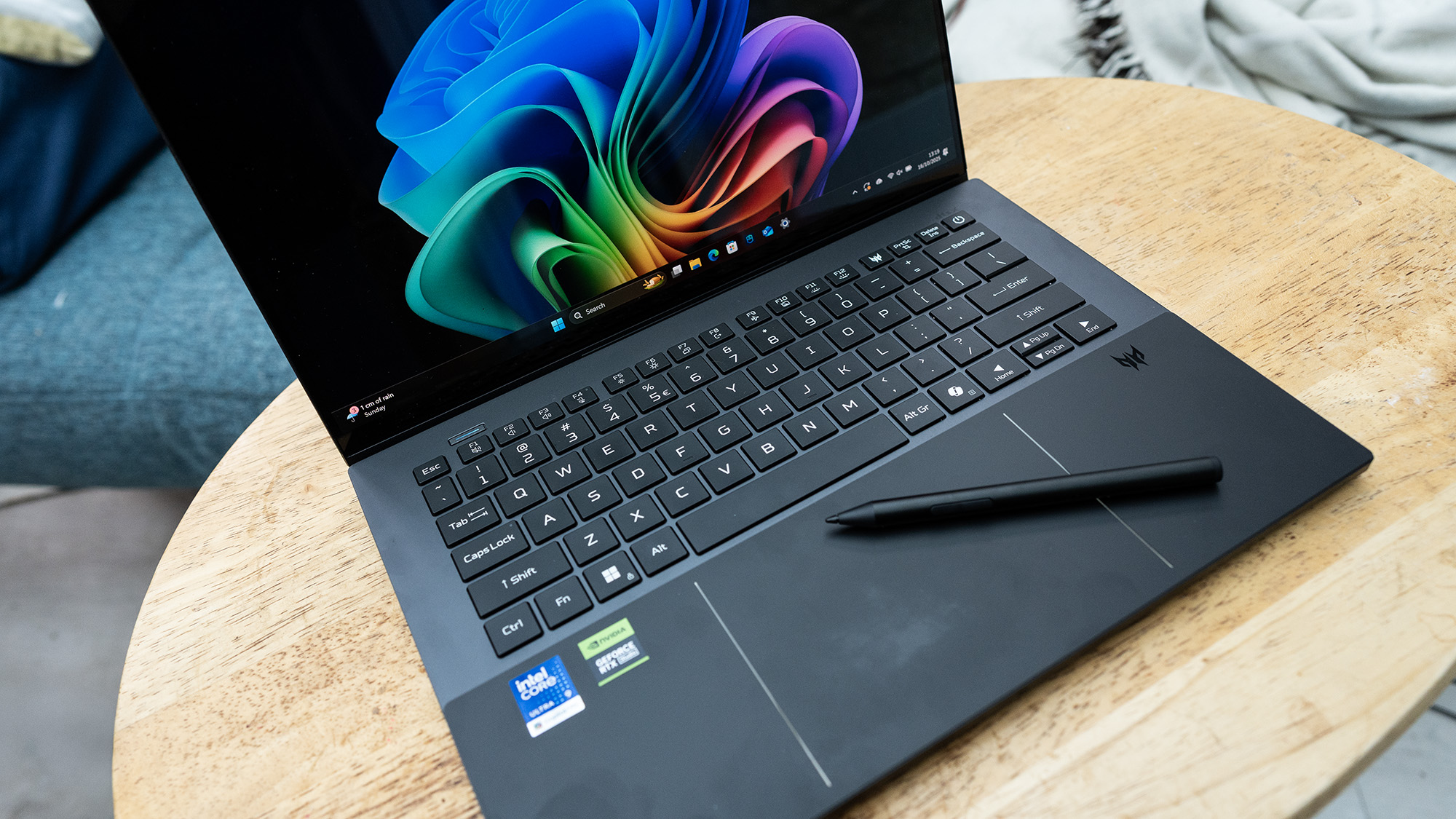
With its cutting-edge components and compact frame, the Acer Predator Triton 14 AI looks like a creative powerhouse, and it can be exactly that.
out of 10
Low-cost (though still about a grand) gaming laptops can make effective creative machines, with their strong CPU and GPU performance. This one from Acer proves that, with enough power for video editing, a bit of rendering, and flying through 2D graphics. It’s a bit big and loud and heavy, but that’s the price you pay for not spending more.

Ian Evenden has been a journalist for over 20 years, starting in the days of QuarkXpress 4 and Photoshop 5. He now mainly works in Creative Cloud and Google Docs, but can always find a use for a powerful laptop or two. When not sweating over page layout or photo editing, you can find him peering at the stars or growing vegetables.
You must confirm your public display name before commenting
Please logout and then login again, you will then be prompted to enter your display name.
